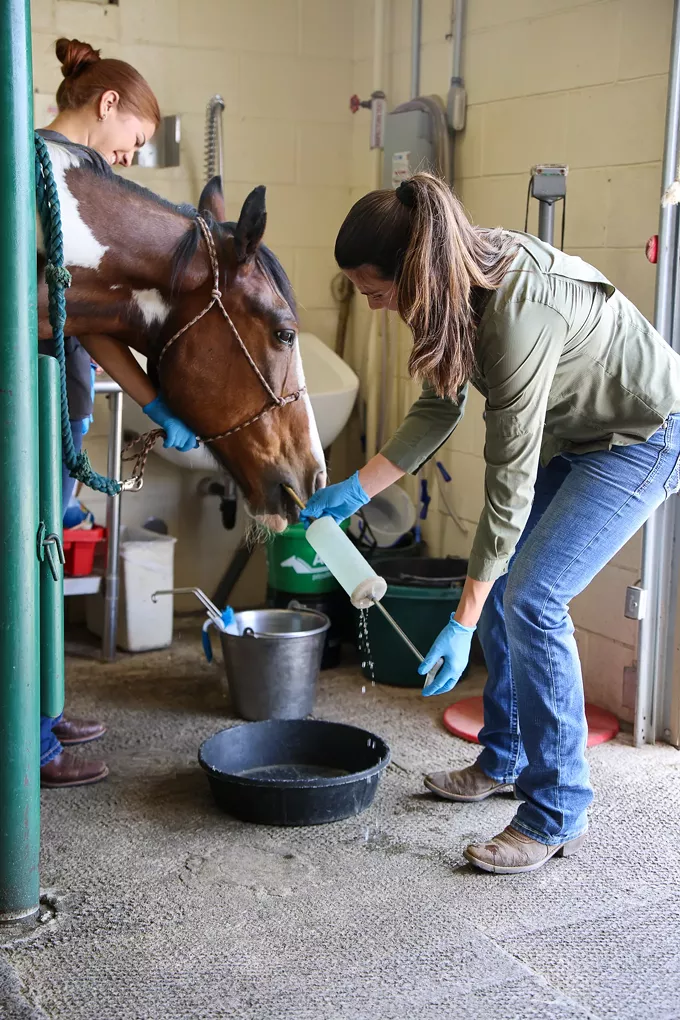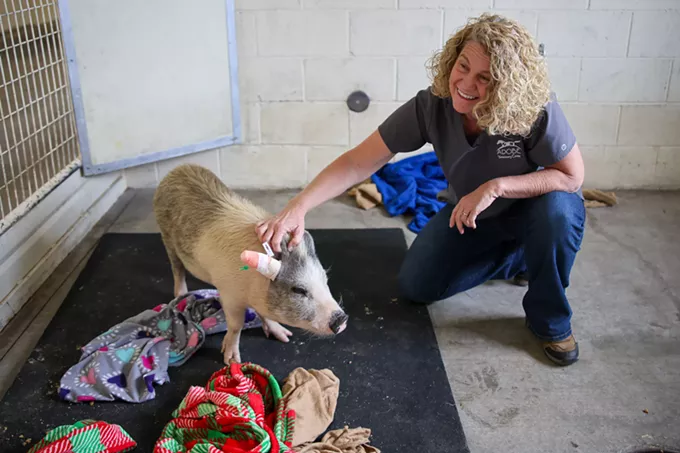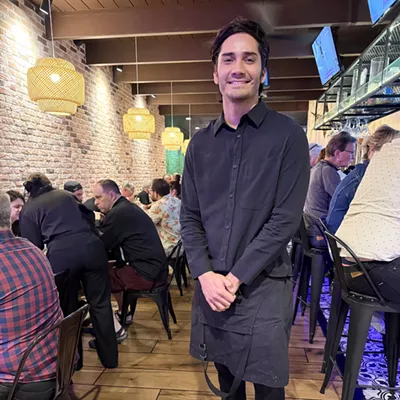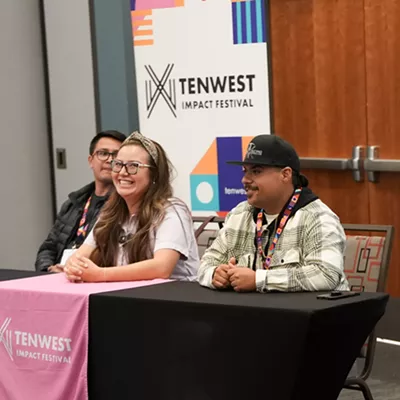Dr. Christine Staten knows exactly when she decided to become a large animal veterinarian.
“At 9 years old, I have a memory of my pony (Brandy) being super sick…” she said, “The veterinarian drives up the driveway, treats my horse, and an hour later drives away and my horse was cured. I said to my mom, ‘Is that man a magician?’ He brought my horse from what I thought was going to die to totally normal in an hour.”
Today, she has a 25-year career under her belt and is the owner of Adobe Veterinary Center and Pet Resort. The facility is situated on just under four acres of land at 8300 E. Tanque Verde Road. She and a team of 10 other women vets treat small animals, large animals and horses, which are in their own category of treatment.
In many ways, an animal clinic is much like a doctor’s office. There are appointments, a waiting room, exam rooms, stethoscopes and all the other equipment that helps doctors know what’s wrong with those who come to see them. What’s different are the patients.
On one particular day in the waiting room, a friendly standard poodle came over for sniffs and pets. A medium-sized dog relieved himself on the tile floor on his way out. “Don’t worry about it; this happens all the time,” a staff member said as she came out with paper towels and a cleaner. A young, curious Nubian goat was carried around by his human as she paid her bill. This is all in a day’s work for the front of the house.
Step into the back and it’s another story. The days are never the same and they begin early. The first appointment is at 8 a.m. but animals that are having surgery come in at 7:30 a.m.
At 9 a.m. Oakley, a young Nubian goat, was fast asleep on an exam table. Dr. Meghan Marner, assisted by vet technician Paulina Garcia, removed a splint from Oakley’s hind leg.

“They play like crazy,” Marner said. “They’re truly like small children so this (leg bone fracture) is not an uncommon injury at all. They heal from fractures really well.”
An overhead monitor showed Oakley’s leg x-ray and from that Marner could see, that although he was healing nicely, he needed another three weeks to heal completely. She put on a new splint and when Oakley woke up, he was ready for action.
Marner is a rarity, although not necessarily so at the Adobe practice. She is a large animal vet — a field few are willing to enter. In fact, in this country there are more than 700 counties that do not have a food (or large) animal vet, Staten said.
“There’s a shortage now (of vets) and there’s going to continue to be a shortage if we don’t do some real big sustainability initiatives,” she added.
The number of vets is shrinking as retiring vets outnumber those entering the field. Most of those vets entering the field prefer to work with small animals.
“Fifty percent of all veterinarians that go into large animal medicine leave within the first five years and move over to small animal medicine or leave the profession completely,” Staten said. “So even the few we get in, half of them are leaving.”
Marner said that as with many veterinarians, she knew she wanted to be a large animal vet since she was young.
“I’ve always loved science and I’ve always loved animals,” she said. “My love of large animals started when I started riding horses as a very young kid. This is just a very underserved area in veterinary medicine, especially for horses. Less than 5% of graduates are going into this type of medicine.”
To encourage students to join the field, Staten strives to open her practice to students so they can get real-world experience. The practice takes interns and last January, along with two other veterinary practices, hosted a weeklong work experience for students from various vet schools across the country. It’s a way, she said, of showing students how interesting and satisfying the field can be.
“We really want to get the students involved with large animal medicine,” she said. “We want to get them excited about it. We’re excited about it and if we can get students excited about it we have a much bigger opportunity to grow veterinary medicine.”
The back of the clinic houses large animals that need to stay overnight or simply come in for a checkup. It looks like a big garage, with a tall door and concrete flooring. On this day, there were four pot-bellied pigs from the Ironwood Pig Sanctuary being treated. Staten slipped into Mulligan the pig’s pens and scratched him on his head. He was in to get neutered. A vet student performed the surgery.
Horses, cows, sheep, and pigs are all treated in the space, so besides Oakley the goat, Marner saw Bow Tie the horse. Marner gave him his vaccinations and inspected his teeth, something Bow Tie was not crazy about. His teeth looked good but had developed points, a common problem for horses, so she needed to file them down. To do this, Marner and a vet tech put Bow Tie in a metal support structure, Marner anesthetized him and proceeded to clean out his mouth using a giant syringe and water.
Managing Oakley and Bow Tie were all in a day’s work for the back of the house and both Staten and Marner would do nothing else.
“Those of us who are passionate about large animal medicine couldn’t imagine a better life or doing anything differently,” Staten said. “It’s the greatest profession ever.”
“We all choose it because we love it,” Marner added.
Adobe Veterinary Center and Pet Resort
8300 E. Tanque Verde Road, Tucson
520-546-8387
adobevetcenter.com











